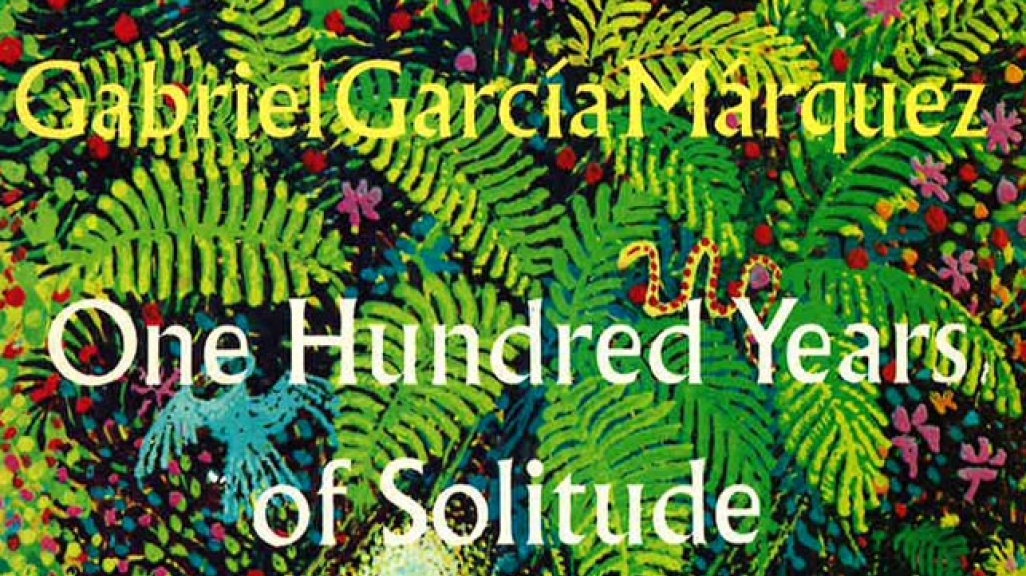Gabriel García Márquez: A Long, Scintillating Shadow
Gabriel García Márquez: A Long, Scintillating Shadow
Review’s Daniel Shapiro reflects on the literary master’s legacy and Americas Society’s translation and promotion of his work.
On April 17, 2014, in Mexico City, the world lost a literary icon. Gabriel García Márquez was the Nobel Prize-winning author of classic novels including Cien años de soledad (1967, One Hundred Years of Solitude, 1970), El otoño del partriarca (1975; The Autumn of the Patriarch, 1976); El amor en los tiempos del cólera (1985; Love in the Time of Cholera, 1988), El general en su laberinto (1989, The General in His Labyrinth, 1990), and so many other beloved works—among them novels, short stories, essays, and a memoir.
Besides being great works of the imagination, universal in theme—exploring memory, love, and death—García Márquez’s literature collectively reflects on the past violence in his native Colombia, as well as on Latin American social and political realities as a whole. His novels and other works, particularly his wildly inventive “magical realist” tour-de-force, One Hundred Years of Solitude, have profoundly influenced both twentieth- and twenty-first century literature and culture, not only in Latin America, but throughout the world, leaving its golden wizard’s dust, as it were, on the work of generations of writers from Isabel Allende to Toni Morrison to Salman Rushdie. The obituaries in El País, The New York Times, and The Washington Post, and by fellow writers from Colombia to Chile to Spain, express the grief the world feels at his passing, as well as reminding us of the great contribution that he left behind, a gift that will stay with us forever.
To talk about García Márquez is to talk about the Latin American literary Boom, the explosion of literature across the continent by writers including García Márquez and a host of others—among them, Guillermo Cabrera Infante, Julio Cortázar, José Donoso, Carlos Fuentes, and Mario Vargas Llosa. And to talk about the Boom, particularly in the United States, is to talk about the Department of Literature of the Americas Society (formerly known as the Center-for Inter-American Relations), which in significant ways, helped launch Latin American literature in the United States. It did so through its active public programming, through publication of Review magazine—founded in 1968 and still going strong—and, most notably, through its translation subvention program, which commissioned the translation of more than 80 works of literature from throughout the Americas and collaborated with publishers to ensure their publication in this country. The most famous of these titles today is, of course, Gregory Rabassa’s English version of García Márquez’s One Hundred Years of Solitude, published in 1970 by Harper and Row.
So while we mourn the loss and sing the praises of one of the world’s greatest authors, we should also sing the praises of his translators: particularly, Dr. Rabassa, who brought to the English-speaking world his luminous translation—about which the author himself reportedly remarked that he preferred it to the original Spanish text—as well as translations of the author’s other early novels; and Edith Grossman, the brilliant translator of García Márquez’s other classic, Love in the Time of Cholera, and of the many works that followed it. Both translators are artists in their own right.
We should also praise the early editors of Review magazine, such as Ronald Christ, who had the vision to celebrate García Márquez’s early masterwork in a special supplement in its pages, specifically, in Review 3, published the same year as Rabassa’s translation. That supplement compiled translations of the most important reviews and essays on García Márquez’s novel up to that time—illuminating pieces by authors Reinaldo Arenas, Fuentes, and Vargas Llosa; by eminent critic Emir Rodríguez Monegal; and by other international contributors. Today the compilation stands not only as a record of a masterpiece but also a harbinger of what was in store—the author’s next books and the lasting impact his landmark novel would have on countless writers in the years to come.
For many years, García Márquez could not travel freely to the United States for political reasons, and thus remains elusive here when compared to his presence in Latin America or Europe—notwithstanding his many faithful U.S. readers. In many ways, he stands like a long, scintillating shadow over our collective imagination: We know him principally through his literature. And that is perhaps as it should be. And what’s true for the society is also true for the Americas Society: Over the years, the Department of Literature has followed his work, both through programming and through publication in Review magazine. Beyond the special supplement mentioned above, the magazine has published reviews of his novels as they appeared in translation as well as essays on his oeuvre. While we were unable to present the great author himself at the Society, we presented the next-best thing during the 1990s: his close friend, fellow Colombian writer Alvaro Mutis, author of the much lauded Maqroll series (also translated by Edith Grossman, who appeared along with him), whom García Márquez deeply admired. Some years later, the Department organized a lecture by the renowned Gerald Martin after the publication of his acclaimed biography, Gabriel García Márquez: A Life (2008), which brought its readers and the attending audience tantalizingly close to the master himself.
Let’s keep drawing inspiration from his rich and inexhaustible body of literature. Let us enter his world with the continual wonder expressed in so many works of his—a very old man with enormous wings; a couple who meet in a dream in his “Eyes of a Blue Dog;” the eternal love of Florentino and Fermina as their boat endlessly circles the shore infected with cholera; yellow blossoms raining down on Macondo in One Hundred Years of Solitude; and from that same novel, perhaps his most lasting image, one known the world over: the wonder of Aureliano Buendía the day he discovers ice.
Note: Review magazine looks forward to publishing a remembrance of Gabriel García Márquez in a forthcoming issue (no. 89, Fall 2014).









